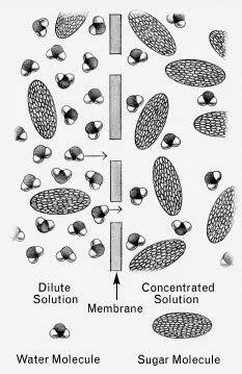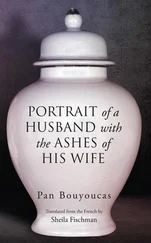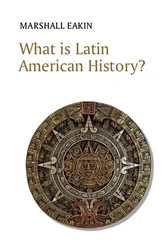Marlene Parrish - What Einstein Told His Cook 2
Здесь есть возможность читать онлайн «Marlene Parrish - What Einstein Told His Cook 2» весь текст электронной книги совершенно бесплатно (целиком полную версию без сокращений). В некоторых случаях можно слушать аудио, скачать через торрент в формате fb2 и присутствует краткое содержание. Год выпуска: 0101, Издательство: W. W. Norton & Company, Жанр: Кулинария, на английском языке. Описание произведения, (предисловие) а так же отзывы посетителей доступны на портале библиотеки ЛибКат.
- Название:What Einstein Told His Cook 2
- Автор:
- Издательство:W. W. Norton & Company
- Жанр:
- Год:0101
- ISBN:нет данных
- Рейтинг книги:4 / 5. Голосов: 1
-
Избранное:Добавить в избранное
- Отзывы:
-
Ваша оценка:
- 80
- 1
- 2
- 3
- 4
- 5
What Einstein Told His Cook 2: краткое содержание, описание и аннотация
Предлагаем к чтению аннотацию, описание, краткое содержание или предисловие (зависит от того, что написал сам автор книги «What Einstein Told His Cook 2»). Если вы не нашли необходимую информацию о книге — напишите в комментариях, мы постараемся отыскать её.
What Einstein Told His Cook 2 — читать онлайн бесплатно полную книгу (весь текст) целиком
Ниже представлен текст книги, разбитый по страницам. Система сохранения места последней прочитанной страницы, позволяет с удобством читать онлайн бесплатно книгу «What Einstein Told His Cook 2», без необходимости каждый раз заново искать на чём Вы остановились. Поставьте закладку, и сможете в любой момент перейти на страницу, на которой закончили чтение.
Интервал:
Закладка:
Prussic acid is also present in the cassava tuber, a.k.a. manioc, yucca, and tapioca root, which when grated has to be thoroughly washed to remove the poison before it is made into flour and other products. I have bought flat, eighteen-inch discs of crisp, dry yucca bread from children on the roads in Venezuela, hoping that the raw material had been adequately washed, and I have survived.
To control the rampant use of the word natural on the labels of food products, the FDA has come up with a definition, at least in the context of flavor additives. The ubiquitous all-natural , which manufacturers use to sell everything from cosmetics to toilet cleaners (heavens!—you wouldn’t want an unnatural toilet cleaner, would you?) is not regulated and probably cannot be, because it can mean almost anything the manufacturer wants it to mean—including nothing at all.
The official FDA definition of natural flavoring is published in the Code of Federal Regulations (21CFR101.22) in the form of more than a hundred words that meticulously plug every conceivable loophole and that would put a permanent wave in the brains of most lawyers, even if they knew what “hydrolysate” and “enzymolysis” meant in the definition.
In simple terms, a natural flavor is defined as a substance extracted, distilled, or otherwise obtained from plant or animal matter, either directly from the matter itself or after it has been roasted, heated, or fermented. Note the inclusion of “animal matter” in this definition, a revelation that would shock vegetarians to their carrot roots and send those who adhere to the kosher segregation of meat from dairy products running to their rabbis for elucidation. But animals are just as natural as plants, are they not? Note also that a natural flavor does not have to come from the food it is flavoring. For example, a natural flavor chemical derived from chicken—which needn’t necessarily taste like chicken—can be used to flavor a can of beef ravioli.
An artificial flavor, on the other hand, is defined straightforwardly by the FDA as any substance that does not fit the definition of a natural flavor. Ironically, such synthetic flavoring chemicals, though unabashedly unnatural, are acceptable in all restrictive diets from vegan to kosher, because they are neither animal nor vegetable. (You will search in vain for any philosophical or religious injunctions against 2,6-dimethylpyrazine, the prominent artificial-flavor chemical in chocolate.) Furthermore, most of the chemical compounds in both artificial and natural flavors are not recognized as food by our digestive systems and are not metabolized. That’s why you won’t find them listed in the Nutrition Facts chart; they are not nutrients and are at any rate present in only trace amounts.
Not often realized is the fact that all flavoring additives, natural or artificial, are made by humans. To make an artificial flavor, a flavor chemist (called a flavorist) in a laboratory has to select and blend the right chemical compounds in the right proportions to simulate a natural flavor. And to make a natural flavor, someone in another laboratory or factory has to extract and distill or concentrate the flavor compounds from the raw plant or animal materials.
An even less appreciated fact is that in many cases the man-made flavoring chemicals are identical to Nature’s flavoring chemicals. For example, one of the primary flavor chemicals in bananas is isoamyl acetate, which can be made synthetically and used as a (rather poor) imitation of banana flavor.
Most natural flavors, however, are much more complex than that. Some thirty-seven different chemical compounds have been identified in the flavor of mangoes, and more than eight hundred in the aroma of coffee. To imitate the effects of these natural flavors on the palate, a flavorist must blend a dozen or more chemicals, no single one of which hits the flavor nail directly on the head.
An interesting case is the vanilla bean, most of whose natural flavor comes from its 2 percent content of vanillin, known to chemists by its nickname, 4-hydroxy-3-methoxy benzaldehyde. If this and the other natural vanilla flavors are extracted into alcohol, the product may legally be labeled Pure Vanilla Extract, a “natural” flavoring. But if the product contains synthetic vanillin, which can be made by any of several processes, it must be labeled Imitation Vanilla Flavoring.
But get this: If the synthetic vanillin was made not by combining chemicals in a laboratory but by allowing bacteria to ferment ferulic acid, a chemical obtained from corn or rice, it may be labeled Natural Vanilla Flavor, because fermentation is a “natural” process. The vanillin obtained by the fermentation, however, is absolutely identical to the vanillin made in the lab.
The bottom-line issue for cooks is “Does artificial vanilla flavoring taste as good as natural vanilla flavoring?” Well, in taste panels convened by Cook’s Illustrated magazine over a period of several years, the imitation vanilla flavoring was actually preferred over the natural product. So there!
TRICKLE-DOWN ERGONOMICS
I have observed an interesting phenomenon with milk and orange juice cartons. After I pour out the “last” drops, I can always come back later and pour out more liquid. What’s going on?
So you’ve noticed that, too, eh? It happens when you’re “emptying” all sorts of containers, including cocktail shakers and wine bottles. I hadn’t given it much thought, but you have inspired me to figure out what really is going on.
What’s undoubtedly happening is that as you “empty” the container, some of the liquid encounters microscopic rough spots or non-wettable spots on the container’s inside surface. These spots hold back small drops of the liquid, which remain stuck there as long as the container continues to be inverted. But when you return it to its upright position, the small drops can slide back down, because the path had been smooth up until they encountered those snags. So the drops do slide back down, joining their brethren at the bottom to form a pool. The pool is now heavier than any individual drop, so when you invert the container again the pool can steamroller right down past the rough spots.
I hope you are happier for understanding that. I know I am.
WANT S’MORE?
I am curious about marshmallow. Ever since I was a kid I’ve wondered how that sweet, puffy substance with such an odd name and texture was ever invented. Is it really old?
The modern version is only about a hundred years old, but it’s a new take on a several-thousand-year-old treat.
The magical material we call marshmallow is named after the marsh mallow plant ( Althaea officinalis ), whose roots contain a sweet, gummy sap that has been used as a confection and for its supposed medicinal properties for some four thousand years.
In the late nineteenth century, when candy makers were unable to keep up with demand for the real thing, an imitation marshmallow was concocted from sugar, starch, and gelatin. Today, most marshmallow candies are made from corn syrup, sugar, modified starch, and gelatin. (Modified starch is starch that has been treated chemically or physically to improve its characteristics for manufacturing purposes, such as by making it able to mix with and thicken cold water.)
The most pleasurable characteristic of marshmallow is its uniquely soft, pillowy texture, unmatched by any other food. To make it, a hot (240°F or 116°C) mixture of corn syrup, sugar, water, and gelatin is whipped vigorously into a frothy foam until it is two to three times its original volume. Zillions of microscopic air bubbles remain trapped as the mixture cools and the gelatin sets. The result is a solid foam that is only 35 to 45 percent as dense as water.
Читать дальшеИнтервал:
Закладка:
Похожие книги на «What Einstein Told His Cook 2»
Представляем Вашему вниманию похожие книги на «What Einstein Told His Cook 2» списком для выбора. Мы отобрали схожую по названию и смыслу литературу в надежде предоставить читателям больше вариантов отыскать новые, интересные, ещё непрочитанные произведения.
Обсуждение, отзывы о книге «What Einstein Told His Cook 2» и просто собственные мнения читателей. Оставьте ваши комментарии, напишите, что Вы думаете о произведении, его смысле или главных героях. Укажите что конкретно понравилось, а что нет, и почему Вы так считаете.












